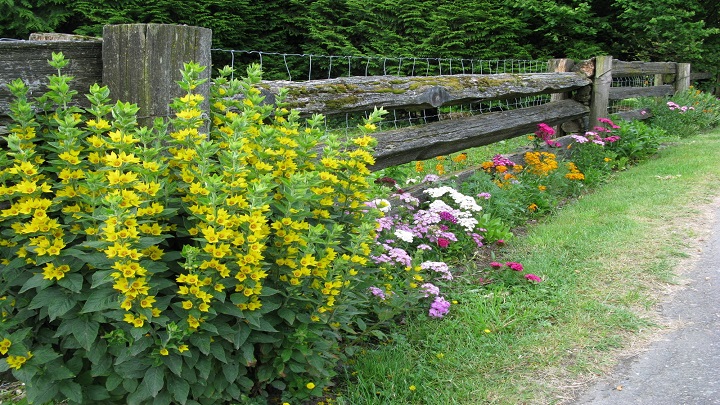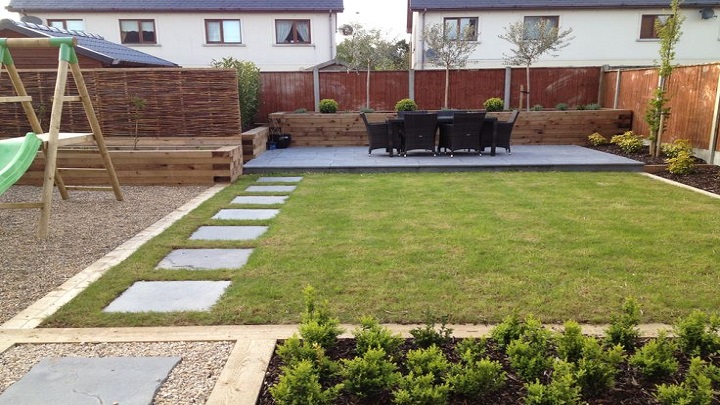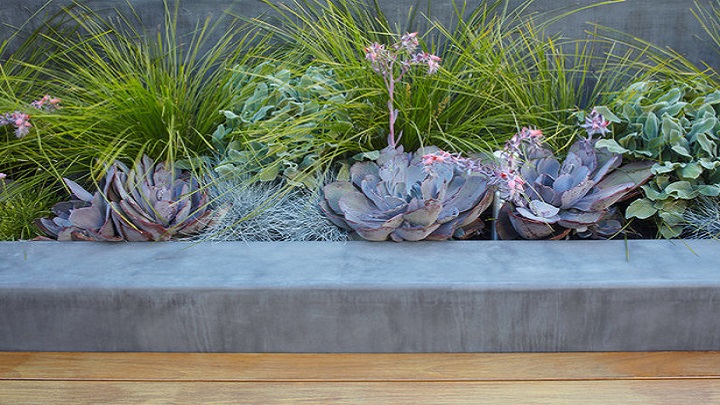Save time and money in the long term by carefully planning a garden with these helpful tips.
1. Establish a plan
- Whether you are starting from scratch or from an existing landscape, start by establishing a plan.
- Think about how you want to use your space and how much time and money you want to spend on creating and maintaining the landscape.
Then, follow your plan to keep your workload to a minimum.
2. Stay Modest
Whatever the attractiveness of a large yard with generous flowerbeds, maintenance obligations increase with the size of the garden.
- Reducing the size of the project results in less work.

3. Choose low maintenance plants
Have reasonable landscaping projects. Do not be tempted by considering a plan that is more important than the time you have.
- Also, whatever their attractiveness, avoid plants that need a lot of attention, that come out of their dedicated space or become invasive.
4. Find long-term solutions
Identify maintenance issues that require your attention year after year and work to find long-term solutions.
- Removing known problems from your maintenance list will reduce your workload throughout the season.
5. Install a watering system
To ensure a precise and uniform watering, without raising a finger, install an automatic irrigation system.
- You can buy systems to install yourself in garden centers or in home improvement stores or hire a professional.

6. Plant near water access
Make sure you have easy access to water throughout your property, including faucets, rotary distributors, and outside piping.
- This helps water the plants with minimal effort throughout their growing season.
7. Be organized
Save time by organizing your landscape for maintenance needs.
- Some plants suffer from the heat of summer and need frequent watering, while others grow when forgotten.
8. Choose an easy-care lawn
A traditional lawn requires frequent mowing and watering to maintain its lush appearance.
- Reduce your workload by choosing a grass that grows in your area, or by converting a part of your lawn into a vegetation cover.

9. Separate with a hedge
A clean edge that separates the lawn, walkways, and flowerbeds gives a garden a professional look.
- Most gardeners find separations easier to maintain if they use a vinyl, metal or brick edge to prevent mulch or gravel from spreading into the lawn and grass to grow in the flower beds.
You May Also like To Read: Yard Maintenance Tips: Make Your Lawn Healthy While Helping The Environment
10. Select low maintenance materials
When considering the possibilities of landscape building materials, bear in mind their maintenance, as it can add to the initial cost.
- Paved and gravel-covered areas, such as patios and walkways, generally require little maintenance.
11. Think Strategically
Handling a lawnmower on a steep slope is a difficult and potentially dangerous job.
- If possible, change the grade of the slope by laying it down.
- Alternatively, replace the lawn of a mound with a vegetation cover.

12. Maximize Shrubs
Trees and shrubs make it possible to anchor a landscape in the long term.
- Avoid those who drop fruits or are likely to have diseases or parasites.
- Also, keep their adult sizes in mind when planting, so you do not have to move them or prune them regularly.
13. Organize your tools
Find a convenient place to keep your tools and gardening supplies accessible and organized.
- Whether you build a self-supporting shelter or simply place it in a corner of your garage, you will save time if you can keep track of your tools easily.
14. Think of vegetal cover
- Vegetable coverings are practical choices for difficult landscapes because they require little maintenance.
Before planting, kill the weed and weeds of the desired area and check that the plant you choose is not invasive.
15. Buy durable items
Having the right tools – and keeping them in good condition – makes maintenance tasks easier.
- Purchase products that are durable, comfortable to use and tailored to the size of your property and your specific needs.

16. Keep containers nearby
Container gardens are a classic of outdoor decoration, but they often need daily watering and frequent fertilization to stay in shape.
- To reduce the workload, group your containers to allow convenient watering, use large pots to prevent the soil from drying quickly, incorporate a slow release fertilizer into the soil and try the self-irrigating pots.
17. Choose the right fertilizer
In the case of fertilizers, slow-release products require fewer applications than those with a rapid release and, in general, it is preferable not to do too much.
- To ensure an overall improvement of the soil, try to use compost that you can do yourself.
18. Use Mulch
If there were only one thing to accomplish to reduce the list of landscaping tasks, it would be to lay a layer of mulch on all flower beds in your garden.
A layer of leaves, coniferous needles or wood chips five to 10 cm (two to four inches) reduces soil water requirements and keeps weeds under control. As a bonus, the mulch improves the soil by decomposing.




Average Rating